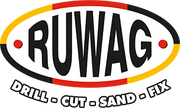The Importance of Proper Drill Handling
Whatever type of DIY project you’re doing, proper drill handling is essential. Drills can be used in a huge variety of projects for every level, whether you’re a total beginner or someone with more experience. From simple tasks such as hanging photos all the way to building furniture or taking on a kitchen revamp, knowing how to use your drill properly is vital.
Luckily, drill handling doesn’t have to be a huge challenge once you know what you’re doing. In this guide, we’ll be sharing some tips on how to get the most from your drill, avoid accidents, prevent damage to your tool and get the best results from your project.
Drill Handling Tips & Tricks
Whether it’s getting the angle right, using the right amount of pressure, working at the right speed or even choosing the right type of drill bits, here are a few tips and tricks to help you master drill handling like a pro.
Always use the right drill bit
We say this often and for good reason. One of the most important things of all, regardless of your project, is choosing the right drill bit. Using the wrong bit will ruin your material, bits and tools, pose a safety hazard and give you poor results. Taking a bit of time to learn about drill bits and their uses is vital. Always read selection charts to understand the difference between drill bit types. Choose the right size bit, too. This will spare you a lot of time, effort and money in the long run.
Drill at the right angle
One of the first and most important things to master is drilling at the right angle. When you drill at the proper angle, you will make holes that are perfectly in line with your material. This means less chance of the drill bit wandering or slipping as you work. It also means a much cleaner, precise hole with no jagged edges. You’ll reduce the risk of stuck drill bits, which can cause damage to your bits, material and tools. The best angle is a 90-degree angle, with the drill held perpendicular to your workpiece. Use a clamp to secure your work and use a pilot hole before you drill to make it easier to work at the right angle.
Apply consistent pressure
The next thing to keep in mind is the pressure. A common mistake made by new DIYers who don’t have much experience using drills is to use too much pressure or too little pressure. Using too much pressure can result in damaged material, stuck drill bits, broken drill bits, and various other issues. Using too little pressure can result in an uneven hole. Always begin drilling by using light pressure and once you begin working, use more pressure if needed. Don’t ever force the drill. Let it do the work instead. It’s also important to use the right pressure for the specific material you are using. Doing a bit of research beforehand to learn what pressure is best for your specific project will help. You can also learn more about working with the material you are drilling or practice on off-cuts to get a feel for pressure.
Maintain a steady speed
Speed is another important thing to get right. Ideally, a variable speed drill will give you the best results as you’ll be able to adjust the speed according to the material you are drilling. Drilling at high speeds on tough material can pose a huge safety risk and damage your material, bits and tool. Trying to work at very slow speeds will make it harder to get clean holes. Consider the material you are drilling to determine the speed. As a very general rule of thumb, harder materials are best at a slower speed while softer materials can be drilled at higher speeds.
Ensure proper depth
Getting the depth right is essential if you want decent results without the risk of splitting your material, getting cracks or ending up with jagged holes. This can be a little bit of a challenge to master if you are a complete DIY novice but with practice, you’ll get there. A depth stop will help hugely. You can also mark the drill bit with tape to ensure that you drill to the right depth. This prevents damage to your workpiece, resulting in a smooth, accurate hole.
Practice good posture
You may not think that posture affects drill handling. How you stand as you work makes it easy to work at the right angle, though. It also gives you more control as you drill. You’ll prevent strain during drilling and find it easier to apply the right amount of pressure. Stand with your feet shoulder-width apart and hold the drill with both hands for maximum control. Keep your back straight and use your body weight to apply pressure as you work, rather than just working with your arms.
We hope these tips make it easier to handle your drill more effectively, whatever project you have planned. At Ruwag, we offer a wide range of drill bits for every type of project, giving you the best drill handling results, every time.

